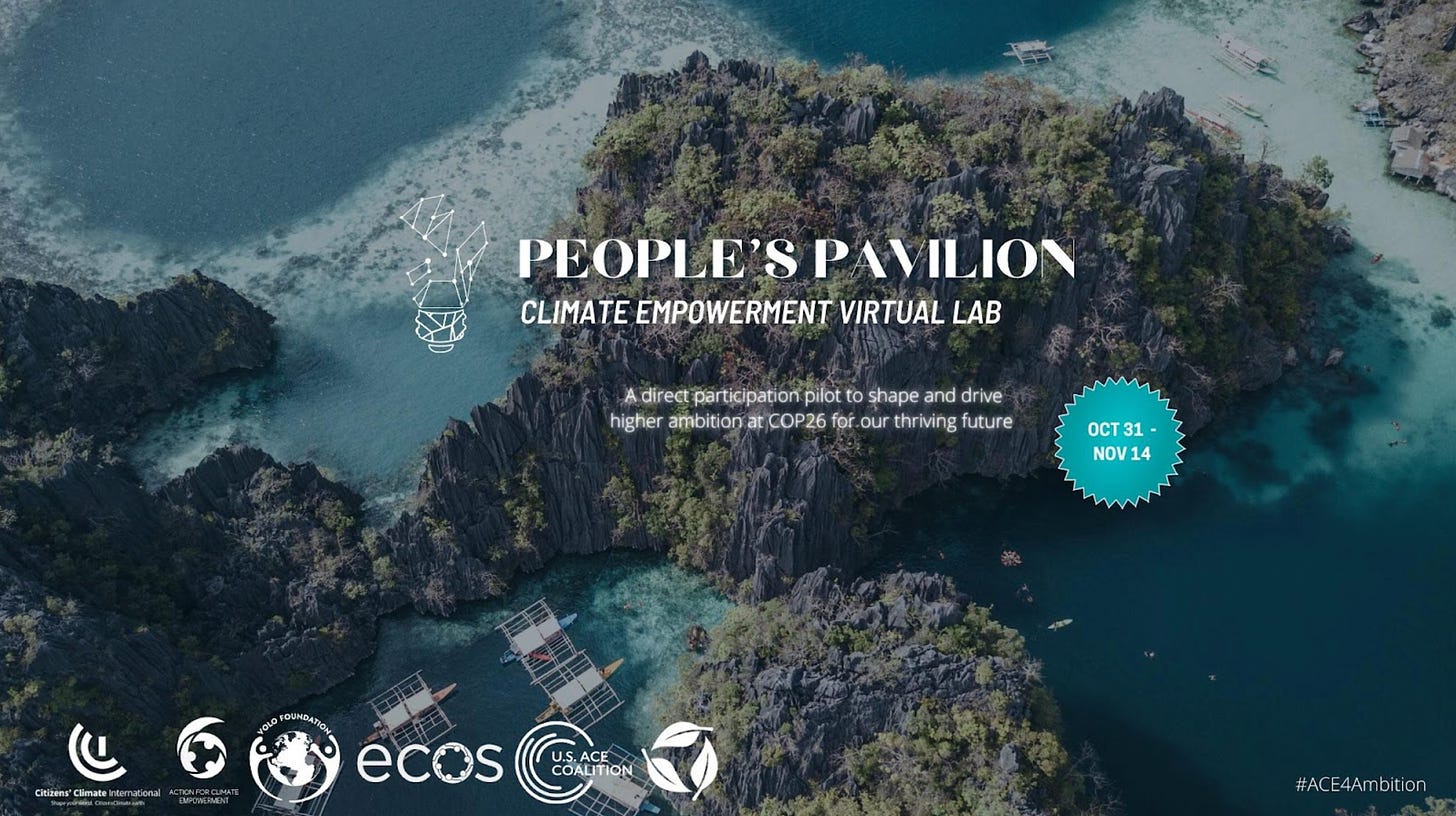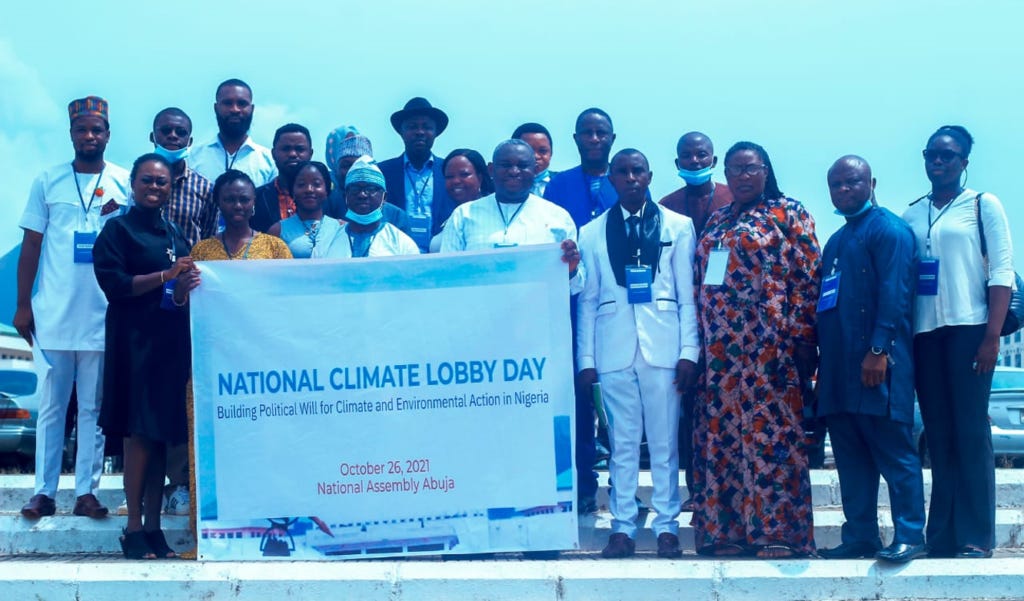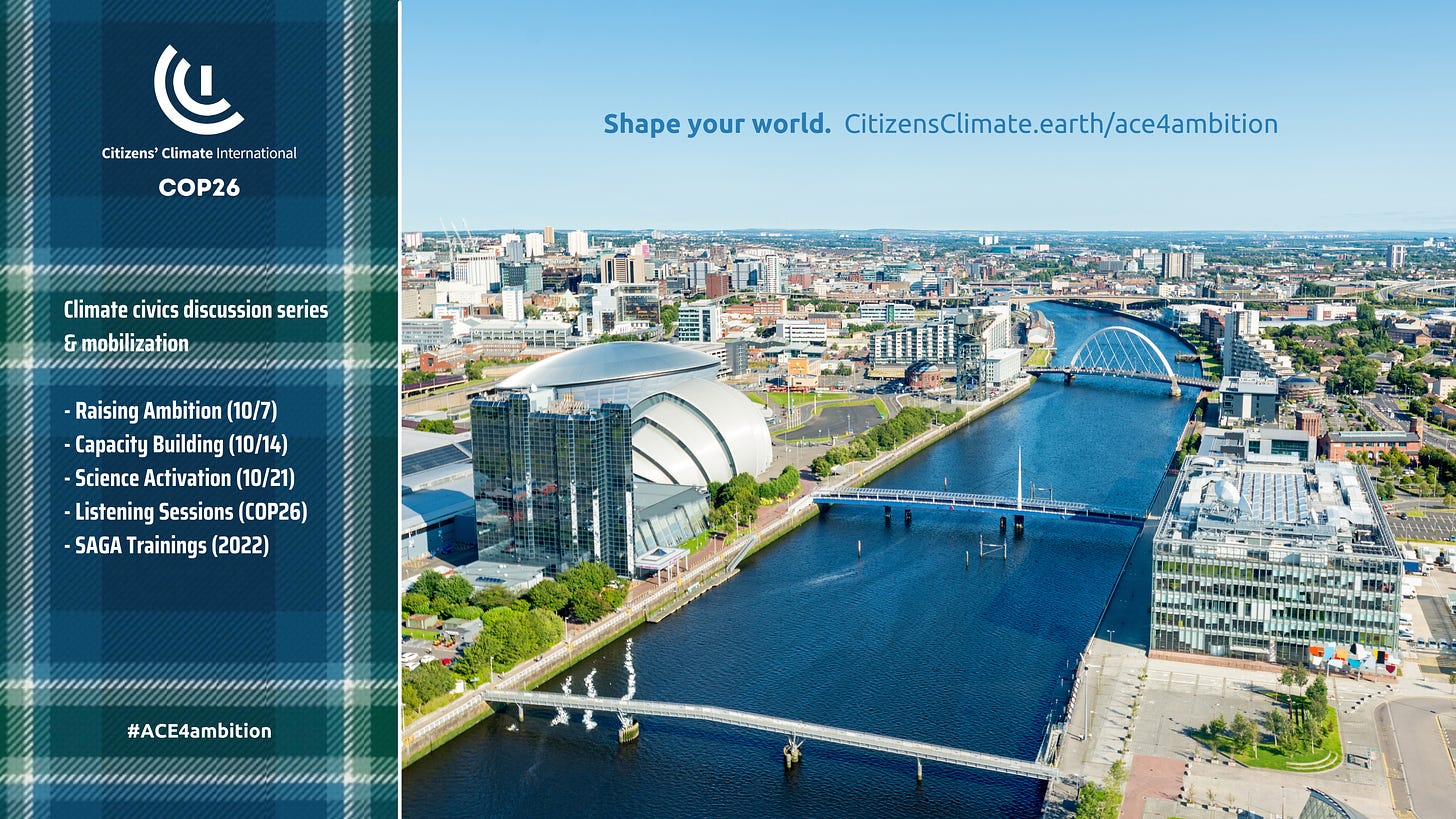COP26: Acting together to secure a livable future
NEWSLETTER, Nov 2021 — Our COP26 areas of focus; the People’s Pavilion; CCL Nigeria National Lobby Day; civics as science activation; Reinventing Prosperity Year 1 report…
In 1992, nearly 200 nations committed “to prevent dangerous anthropogenic interference with the climate system”. 29 years later, we are living with the costly impacts of that dangerous interference. Most nations have not yet begun the economy-wide transformation needed to avoid persistent climate emergency. The COP26 is a chance to redefine our financial and economic futures, to align investment with health, resilience, and shared prosperity, and to defend the right to remain free from preventable harm. We join the negotiations as citizens and stakeholders committed to a world that works for everyone.
COP26: Acting together to secure a livable future
The COP26—the 26th Conference of the Parties to the Convention—brings together leaders from 196 nations and thousands of observer organizations, to detail national climate action commitments, settle on operational rules for cooperative emissions reduction, and mobilize unprecedented levels of climate-related finance. The result must be a mainstreaming of science-based pathways to zero emissions economies by mid-century, on schedule to avoid more than 1.5ºC of global heating.
To get there, a few key areas of climate action need to be worked out:
All nations must agree that they will fully decarbonize their economies by 2050.
“Cooperative implementation” must align with 50% reductions in overall global heating emissions by 2030.
Science-based financial decision-making must have clear pathways to becoming the mainstream reality.
Food systems, ecosystem restoration, clean watershed services, and climate-smart agriculture, all need to become part of the mitigation, adaptation, and resilience program of every country.
Forward progress must be reinforced by science-based trade policy, opening opportunity for climate-smart practices and reducing the market for destructive practices.
At Citizens’ Climate International, we recognize the need for active, ongoing citizen participation in the design and implementation of climate policies. We must acknowledge the direct impact of climate threats and costs to basic and universal human rights and the critical judicial precedent of several nations’ supreme courts recognizing that climate protection is a human right.
When we talk about energy systems, climate science, and national policy, we often overlook the degree to which universal human rights are structural imperatives that should shape all of these. Progress toward recognition of climate rights will be instrumental for providing clarity, structure, direction, and momentum for innovation, across all sectors.
To connect needed areas of action to specific capabilities, Citizens’ Climate International comes to the COP26 negotiations with a focus on the following areas of action:
Civics and public participation
Pollution pricing
Climate-smart finance
Nature, from summit to sea
Food systems
On Civics and Participation: We see regular, ongoing engagement of citizens, communities, and stakeholders in both the design and deployment of climate solutions, as critical for securing high ambition and efficient implementation. Read more about the People’s Pavilion and our ACE4Ambition work below.
On Pollution Pricing: We support establishment of a global “price floor”, supported by national policies to impose a steadily intensifying price signal disfavoring climate pollution. As the IEA has reported, “There is no need for investment in new fossil fuel supply…” Pricing systems should effectively and efficiently eliminate climate pollution while building incomes for people and enhancing international cooperation for a zero-emissions future.
On Finance: We support the goal of not only mainstreaming climate-smart finance, but achieving a world in which no money generates climate damage. Public, private, and multilateral finance must rapidly shift into alignment with a zero-emissions future; the fiscal stability of nations must be measured against this science-informed imperative. Climate-smart finance must integrate complex, rapidly evolving Earth systems science data, and foster a decentralized landscape of innovation, Nature-positive production, and resilience-building everyday actions.
On Nature: We take note of the need for much more robust national and cooperative international integration of a Summit to Sea resilience value approach. We need to value, invest to sustain, and safeguard a healthy cryosphere, feeding healthy watersheds and land-based ecosystems, sustaining biodiversity, and preventing harm to ocean life and to the climate chemistry of our ocean.
Food Systems integrate many of the above areas of action. Without a healthy crysophere, stable climate patterns, reliable rainfall, resilient watersheds, ecosystems, and biodiversity, food security is not achievable. Climate action driven by food systems transformation will require regenerative farming and other sustainable land management practices, new kinds of finance, decentralized multisystem data integration, and pollution pricing linked to Nature-positive production.
The COVID, climate, and biodiversity crises together put clear light on the value of solidarity. Solidarity among people, and between nations and generations, and with Nature, is not only an emotional, cultural, or political preference. Recognizing that human and natural systems, our everyday wellbeing, the security of nations, and the livability of the world we leave to future generations, are all part of One Health is already visible as the defining insight of our moment.
The COP26 needs to send the signal that this urgent need for solidarity is recognized by the community of nations. That signal must be reinforced by coordinated, high-ambition climate action, and by the mobilization of unprecedented financial resources. We don’t need to make money out of thin air; we just need it to be realigned. We need to stop funding destruction and start investing in health and resilience.
The People’s Pavilion
The voices of stakeholders are essential instruments for climate action rooted in local experience and aspiration. Through a curated program of climate empowerment-related events, the People’s Pavilion will:
Provide an interactive gateway into COP26’s climate empowerment stories and events;
Host Live from COP26 daily broadcast briefings with feature on-site delegate interviews on the latest negotiation developments;
Party Networking tables to engage with national delegates and to gain insights on country priorities and share views on our thriving future;
OpenCOP Spaces, where users can follow along and connect with delegation points of contact listed under each negotiation theme.
The People’s Pavilion is coordinated by Citizens’ Climate International, in collaboration with the UNFCCC ACE Unit, US ACE Coalition and the ECOS Community, and supported by VoLo Foundation, SWFL RESET Center, and Floor (technology partner).
Citizens’ Climate International Nigeria makes history
Last week, a group of Citizens’ Climate Nigeria volunteers, including members of the CCI Abuja, CCI Kaduna, and CCI Uniabj local chapters gathered at the National Assembly premises in Nigeria to make history. The 22 climate advocates from Benue, Kogi and Nasarawa States shared a day of climate advocate training, then met the next day with lawmakers to discuss strategies for strengthening national and local climate policy. Their work is a leading example of grassroots climate action to build political will for climate action and carbon pricing.
Civics to drive Science Activation
Action for Climate Empowerment (ACE) is a necessary and functional part of any nation’s effort to implement the Convention and the Paris Agreement.
The goal of science translation is to allow key decisional insights rooted in complex scientific work to circulate among the general public and non-science decision-makers more effectively. That flow of information should lead to real-world climate change mitigation, adaptation, and resilience measures, that improve people’s lives and their security in the face of serious climate impacts.
Our ACE4Ambition discussions proposed elements of a science activation general assessment (SAGA) to track the knowledge-based climate action potential of an institution or nation.
One Year of Reinventing Prosperity
Throughout 2020, citizen stakeholders and advocates from the Citizens’ Climate International community shared their experiences of COVID risk, adversity, and resilience. This allowed an examination of COVID risk and recovery questions, in terms of day to day experience at the human scale.
In light of the urgent need to act to avert catastrophic climate disruption and to align economic recovery efforts with that global project, we combined these stakeholder inputs with resilience intelligence insights to formulate the Principles for Reinventing Prosperity—an approach to building back better from COVID, to enhance the everyday wellbeing of people and planet.
Principle 1: We are all future-builders.
Principle 2: Health is a fabric of wellbeing and value.
Principle 3: Resilience is a baseline imperative.
Principle 4: Leave no one behind.
Principle 5: Design to transcend crisis.
Principle 6: Maximize integrative value creation.
On Wednesday, November 3, the Finance Day at COP26, we will release a report on Reinventing Prosperity, one year after the release of the Principles.
More COP26 news
COP26: Global Innovation Hub Launched for Transformative Climate Solutions
State of Climate in 2021: Extreme Events and Major Impacts
“Greater Ambition Now Critical” as UN Climate Change Conference Opens
Remarks by UNFCCC Executive Secretary Patricia Espinosa to open COP26
Join Experts at the 3rd Capacity-building Hub at COP26
Weaving a livable future
The CCI “Blue Planet” tartan was created to commemorate our team’s participation in the COP26 UN Climate Change negotiations in Glasgow. The tartan is symbolic of a way of seeing planetary systems and our responsibility to act as responsible stewards:
Deep blue anchors the design, representing the ocean.
Medium blues at edges represent watersheds.
The lightest blue color represents the atmosphere.
Green squares and rectangles represent arable land, forests, and ecosystems.
White is the cryosphere—the thin, icy layer of climate control, often far away from our thoughts—anchoring a stable climate that provides sustenance and wellbeing across the blue and green spaces of the biosphere.
The human relationship with Nature is implicit throughout, both in the design interweaving planetary systems and in the conscious awareness that science draws clear evidentiary connections between human activity and the life of those planetary systems.








